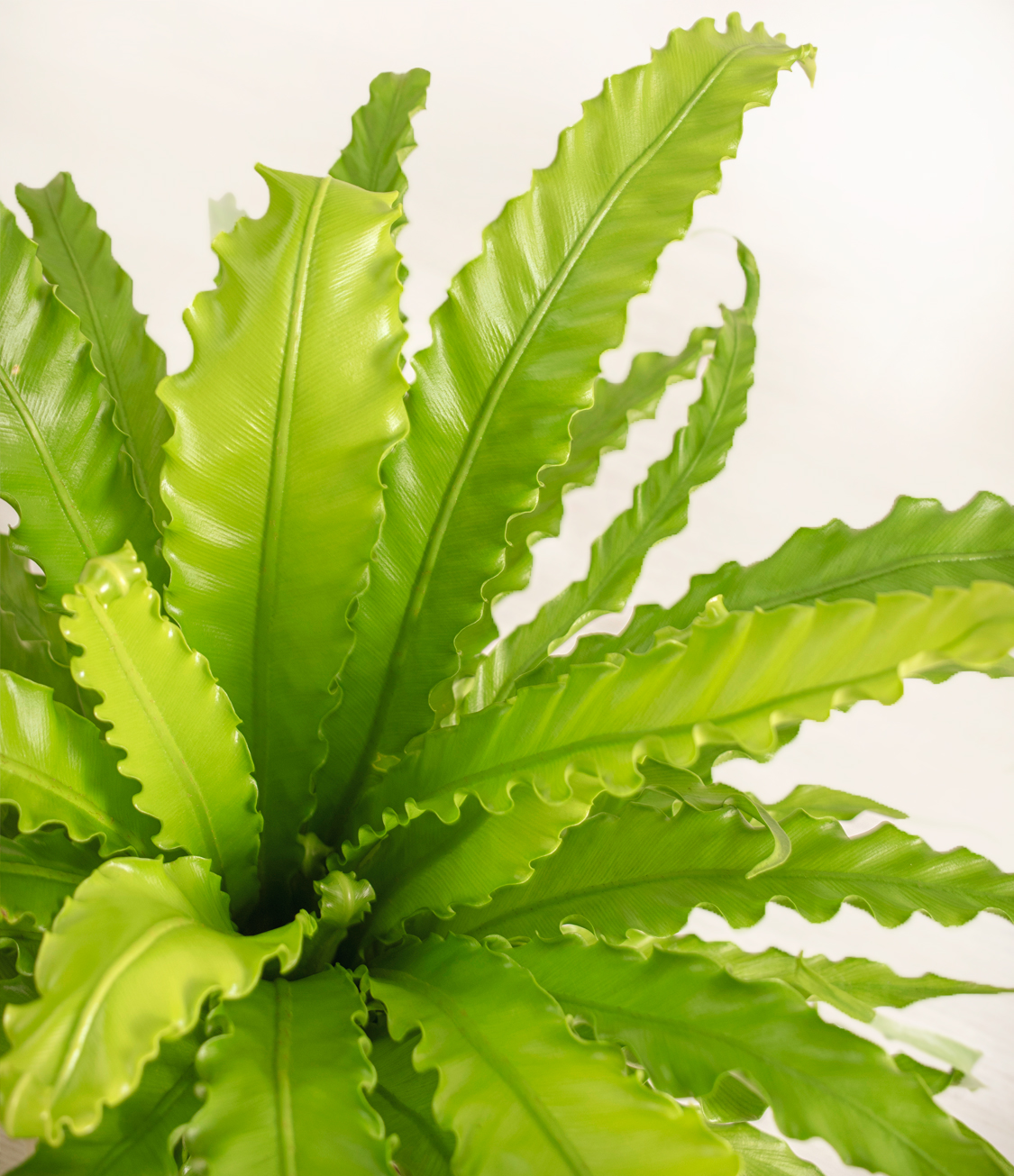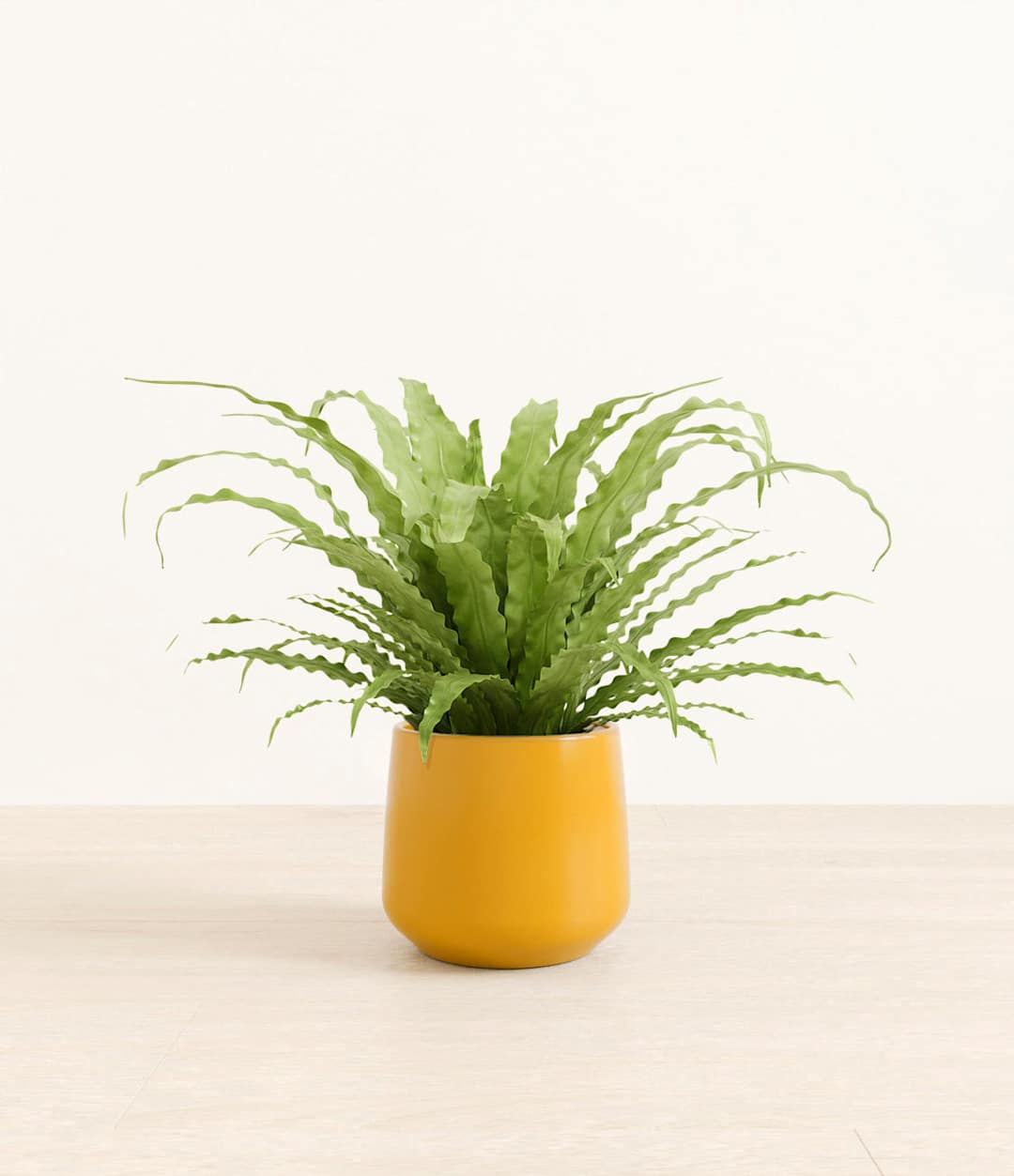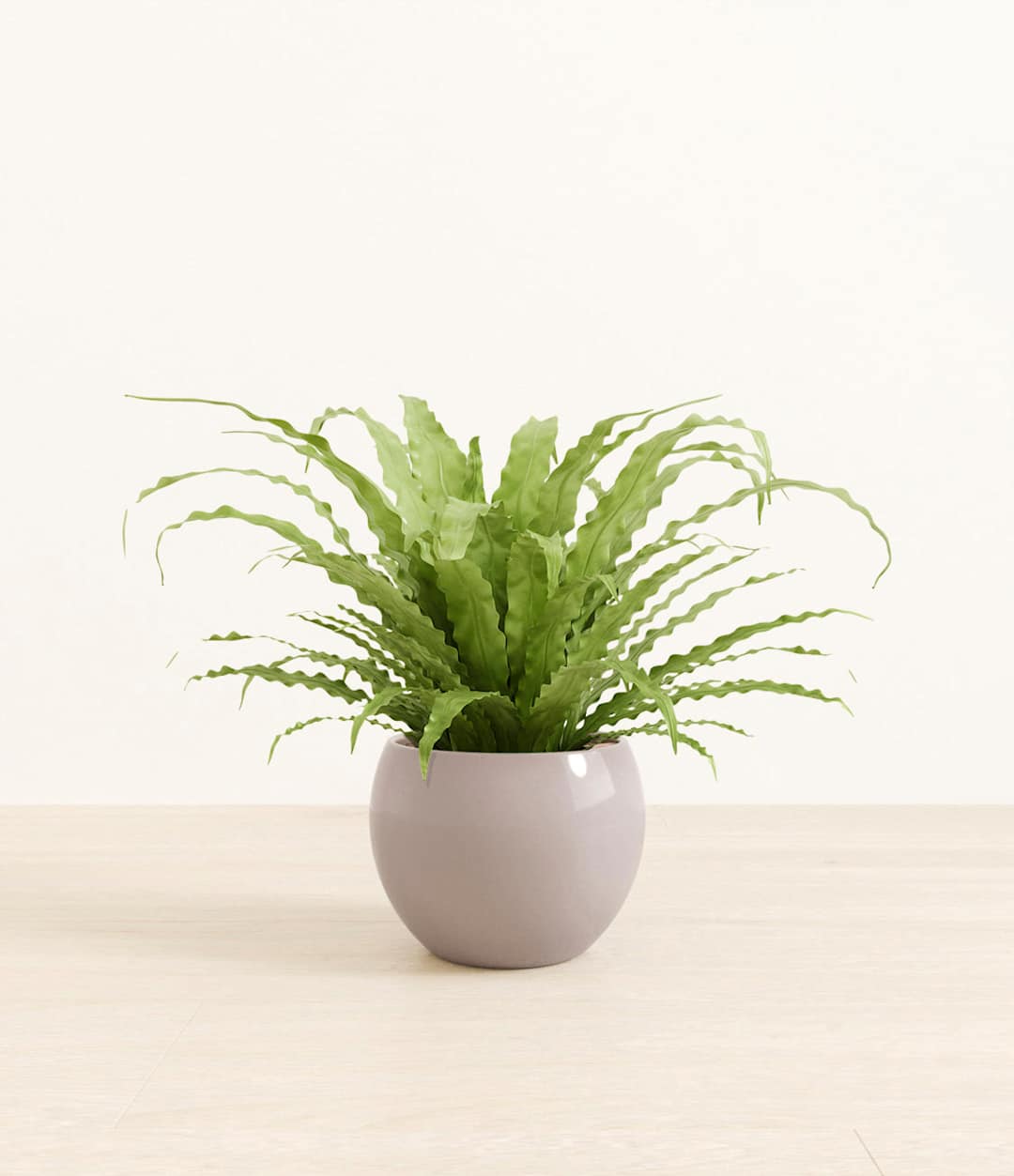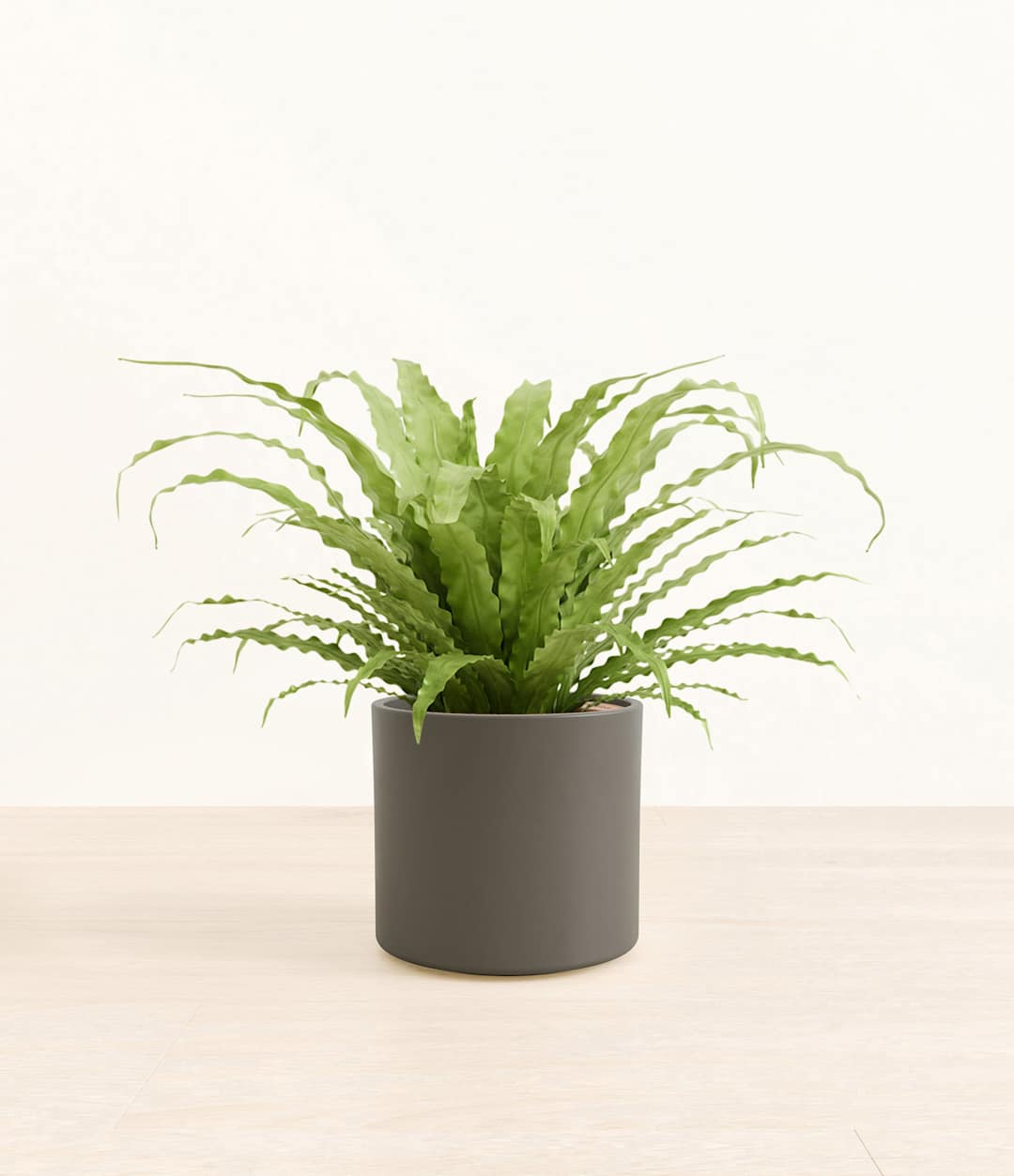How to Care for Birds' Nest Fern
Shop this plantAbout Bird's Nest Fern
Other common names
- Verve Bird's Nest Fern
- Crispy Wave
- Nest Fern
- Asplenium Nidus
How Often Should I Water My Birds Nest Fern?
With easyplant, watering your Birds Nest Fern is simple. Make sure to check the easyplant reservoir once a month and fill it when empty, and you're all set! Bird’s Nest Fern problems arise when the plant receives either too much or too little water. The easyplant watering system makes keeping your plant healthy an easy task.
Birds Nest Fern Light Needs
Bird’s Nest Fern grows best in a space with bright indirect light, where the sun rays are diffused, and can also adapt to spaces with bright direct light, where the sunlight streams inside directly. Avoid placing it in spaces with low light or spaces without natural sunlight.
As it naturally grows in hot and humid climates, your Bird's Nest Fern plant will thrive in an environment that mimics its natural habitat. You wouldn’t want to store your Bird’s Nest Fern in a bathroom without a window, closet, or any room that doesn’t have access to natural lighting. Want more details on plant lighting? Dive into our extensive lighting guide.
The ideal place for your Bird’s Nest Fern would be close to an East-facing window with curtains so it can soak up indirect sunlight from the moment the sun rises in the morning. Bird’s Nest Fern light requirements can be easily achieved in most areas of the home as long as a window is nearby. This means it could make the perfect decoration for any bedroom, living space, kitchen, or office!
Birds Nest Fern Plant Care
How Big Do Bird's Nest Fern Plants Grow?
Temperature & Humidity
One of the things that makes caring for Bird’s Nest Ferns so easy is their temperature and humidity requirements. They flourish in temperatures ranging from 65⁰F to 85⁰F, which is very similar to the temperatures we normally set our thermostats to. This is highly convenient since you won’t have to adjust your home’s temperature to accommodate your new plant. Since Bird’s Nest Ferns have tropical origins, they do like their surroundings to be a bit more humid than the typical home environment. To keep your plant moisturized and happy, consider placing it near other plants or using a room humidifier. Such measures help mimic the Bird's Nest Ferns' natural environment, ensuring it feels right at home.
Are Birds Nest Fern Toxic for Pets & Kids?
Troubleshooting Common Problems with Birds Nest Fern
Frequently Asked Questions about Birds Nest Fern Plant
- Does bird nest fern need sunlight to grow?Like most plants, the Bird’s Nest Fern enjoys sun in the amounts it would receive in its natural environment. Place your plant close to a window but ensure your Bird’s Nest Fern doesn’t receive direct sunlight all day. You’ll want to make sure it receives plenty of indirect sunlight for it to grow without becoming scorched.
- Should you mist a bird's nest fern?
You may notice your BIrd’s Nest Fern having brown tips to its leaves if it isn’t kept at the right humidity levels. Remember, this plant is native to tropical surroundings. Since our homes are not normally as humid as this plant requires, consider placing your fern on a pebble tray or situating it close to other plants, as grouped plants can elevate surrounding humidity. Another option is to introduce a room humidifier, which is especially beneficial during drier months.
- Are bird's nest ferns easy to care for?Yes! Caring for Bird’s Nest Ferns is quite easy— especially with the use of an EasyPlant. With access to indirect sun, routine monthly waterings, and misting for added humidity, your plant will grow and flourish. Learning how to care for your Bird’s Nest Fern is quite simple when EasyPlant takes care of providing your plant with the perfect amount of water.
- How often should you water bird nest ferns?Bird's Nest Ferns prefer a consistent level of moisture. They should be watered when the top inch of soil feels dry, which will typically be once or twice a week, depending on the plant's location. The key is to avoid letting them dry out completely or sit in standing water. To make watering easier, consider using easyplant's self-watering pot. Simply fill the reservoir once a month, and your Bird's Nest Fern will receive just the right amount of water it needs, reducing the risk of over or underwatering.



